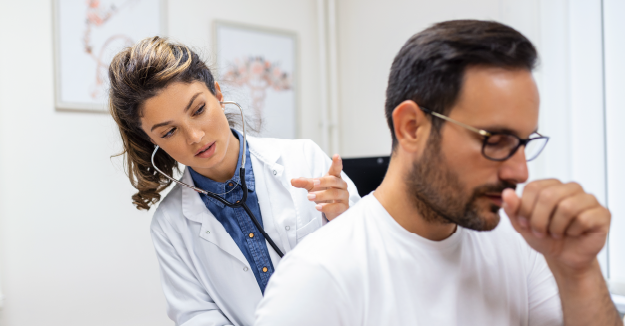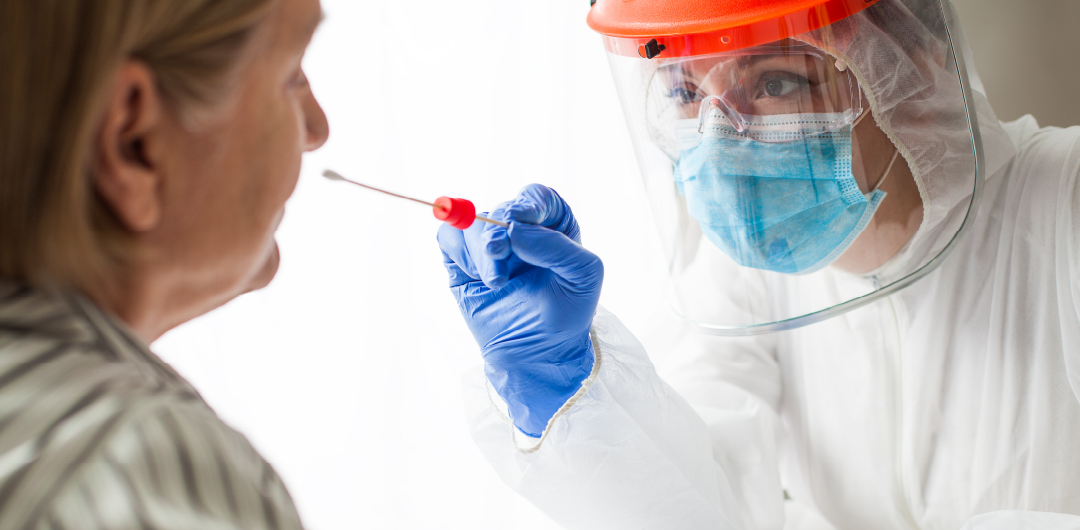If a doctor has recommended that you take a respiratory pathogen panel test, you may be wondering what it is and why you need to take it. Respiratory pathogen panel tests are laboratory tests used to identify the presence of specific viruses and bacteria in the respiratory tract, which is comprised of the nose, mouth, throat, and lungs. While many respiratory infections go away on their own, there are cases where typical treatments for a respiratory infection are ineffective. When this occurs, it’s important to test for a number of pathogens to determine the right treatment. In this article, we go into further detail about what a respiratory pathogen panel test is, why you may need one, and how it can help with a nasty infection.

When Should I Get a Respiratory Pathogen Panel Test?
Doctors typically recommend a respiratory pathogen (RP) panel test after attempting other solutions for an infection. If any of the following conditions are true: a patient is experiencing severe symptoms of respiratory infection, there are no common viral or bacterial infections present in the area or season, or treatment for a more common pathogen has proven ineffective; an RP panel will give physicians information that will help them develop a treatment program or solution to the infection. If you are experiencing severe symptoms of respiratory infection, always seek professional guidance and help rather than using over-the-counter drugs or treatments. A healthcare professional will be able to determine the best course of action or test for your specific circumstances.

How Are Respiratory Pathogen Samples Taken?
There are two ways that an RP panel sample can be taken from a patient: through a nasopharyngeal swab or a nasopharyngeal aspirate. Nasopharyngeal means that the swab and aspirate deal with the nasopharynx, the highest part of the throat, which lies behind the nose and connects to the ears on each side. The nasopharyngeal swab, made common during the COVID-19 pandemic, involves inserting a long swab, like a large Q-tip, into the nasal cavity in the nose for 15 seconds and rotating the swab a number of times in each nostril. The nasopharyngeal aspirate procedure involves inserting a saline solution into the nasopharynx and suctioning out the liquid via a tube inserted into the nostril.

What can a Respiratory Pathogen Panel Test Tell Me?
Respiratory pathogen panel tests generally test for around 20 pathogens, including respiratory viruses and bacteria. Depending on the test your physician uses, the number may vary slightly from around 19 to 22 pathogens. Below, we explain some of the possible pathogens that an RP panel will test for.
Viral Pathogens
The RP panel test can identify many viral pathogens, including, but not limited to, the following:
Influenza
An RP panel test tests for many varieties of influenza, and can detect Influenza B, Influenza A, and subtypes of Influenza A, including A H1, A H1-2009, and A H3. Influenza is most well known for causing the flu, and the viruses range from having mild to fatal symptoms.
Parainfluenza
RP panel tests can identify multiple strains of Human Parainfluenza Virus (HPIV), including HPIV-1, HPIV-2, HPIV-3, and HPIV-4. HPIV-1 and HPIV-2 can cause both upper and lower respiratory infections. HPIV-3 is more likely to cause lower respiratory infections, like bronchitis and pneumonia. Despite the similar name and symptoms, HPIV and Influenza are not related.
Respiratory Syncytial Virus
The RP panel test can identify both Respiratory Syncytial Virus (RSV) A and B. These viruses can cause mild symptoms or lead to severe infections, such as bronchiolitis and pneumonia. Most children will be infected with RSV before their second birthday.
Adenovirus
Adenovirus may lead to mild or severe symptoms, including bronchitis, pneumonia, and even pink eye.
Coronavirus
The RP panel test tests for four strains of Coronavirus: 229E, HKU1, NL63, and OC43. These four strains, unlike SARS-CoV-2, typically have mild symptoms and contribute to 15-30% of common cold cases in adults.
Human Metapneumovirus
Human Metapneumovirus (HMPV) is a relatively recently discovered virus that causes upper and lower respiratory infections during the late winter and early spring seasons.
Human Rhinovirus/Enterovirus
There are more than 200 rhinoviruses and enteroviruses that can infect humans. These are some of the most common viruses that cause the common cold, and most people who are infected with either virus experience very mild symptoms.
Bacterial Pathogens
Chlamydia Pneumoniae
Chlamydia Pneumoniae, a different bacteria than the sexually transmitted infection (STI) of the same name, is a bacteria that leads to respiratory infections and, in severe cases, pneumonia.
Mycoplasma Pneumoniae
Mycoplasma Pneumoniae is a bacteria that most typically leads to a chest cold in children and mild lung infections in all people.
What Do My Results Mean?
Because an RP panel test rests for a number of different pathogens, a positive result means that one of the around 20 pathogens that have been tested for has shown up in your sample. This will often lead to your doctor providing a treatment plan for that specific pathogen or a diagnosis for the particular infection caused by that pathogen.
On the other hand, a negative result does not necessarily mean that you do not have any pathogens present in your system. It only means that none of the pathogens that the panel tested for were present. This usually leads to further testing from your doctor for other, potentially more serious or rare, pathogens. It is also possible that the sample collected during the test did not contain enough genetic material for any pathogen to show up in the results, or that the sample was improperly collected.
How Long Does it Take to Get Results?
Unlike more specific tests for individual pathogens, which may take up to a few days for results, the RP panel test only takes a few hours to return a result. The RP panel also only requires one sample, so it will take much less time and energy than individually testing for different pathogens.
Respiratory Pathogen Panel Testing in the Greater Houston Area
Now that you have a better understanding of what a respiratory pathogen panel test is, you may have realized that an RP panel test is a viable option for you. OnPoint Lab LLC offers a comprehensive respiratory pathogen panel test, which tests for 19 different viral and bacterial pathogens. We are committed to providing the highest quality laboratory tests and services to our patients and guarantee reliability, quality, and convenience every time. Contact us today to learn more about our respiratory pathogen panel testing services and what we can do for you.


